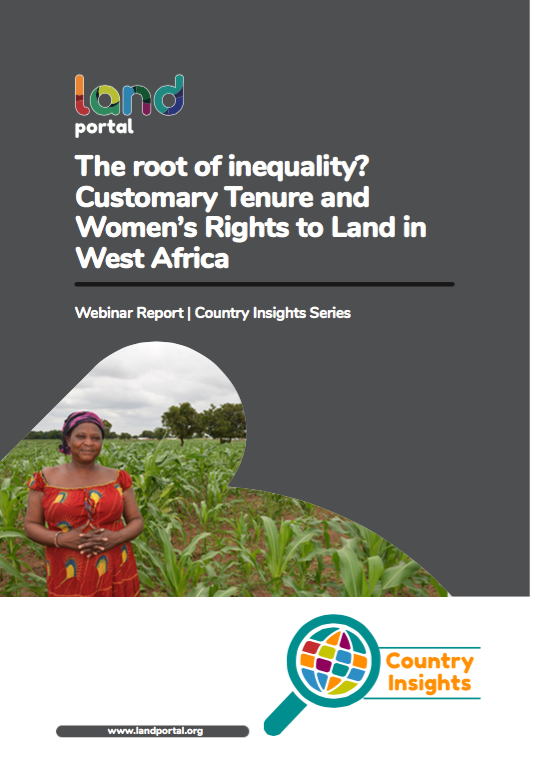Benin introduced new instruments to register customary land rights in the 2013 Land and Domain Law, which was updated in 2017. The BMZ supported “Promotion d’une Politique Foncière Responsable (ProPFR)” project is testing these instruments together with scalable implementation modalities in the…
This is the report of a <a href="https://landportal.org/event/2021/03/root-inequality">webinar</a> held by Land Portal on 24th March 2021.
In much of West Africa,…
The West African Sahel is very vulnerable to the effects of climate change, due to land degradation, dependence on rainfed farming, political instability, poor governance, food insecurity, terrorism, poor infrastructure, and limited technical capacity. This has particular impacts on the…
Valuable lessons can be learned from smallholder farmers who have successfully protected and regenerated tree cover across agricultural landscapes in Senegal, with minimal reliance on tree nurseries, seedling distribution or tree planting. In the process, they have restored soil fertility to…
In the above initiatives, self-motivated populations increased food security and reduced vulnerabilities to climatic shocks by restoring and sustainably managing local forest resources. To regenerate agroforestry parklands, farmers built on traditional systems to increase on-farm tree density…
Unless countries can manage to mobilize millions of land users to invest their scarce resources in protecting regenerating trees, the battle against land degradation cannot be won. These experiences from Niger show that hundreds of thousands of smallholder farm families have substantially…
The climate-smart village approach created enthusiasm and commitment from farmers in seeking solutions to the problems and constraints that they themselves identified. The approach also involved strengthening the capacity of technical staff to use new tools, and to understand and support the new…
When the IFAD-funded project started in 1988, few people could have imagined that 15 years later the degraded plateaus would be covered with trees on land restored to production by individual smallholder farmers. And no one imagined that a village on a barren degraded plateau would one day…
Key success factors
There were several reasons for the success of the restoration initiative.
• Implementation had the active participation of the local community; i.e., it was community- led restoration.
• Restoration produced short- and long-term economic and environmental…
Since the mid-1980s, the positive impacts of these simple, cost-efficient water harvesting techniques become clear, following their increasingly widespread adoption. Their use has allowed smallholders to reverse land degradation, improve soil fertility, sustainably increase crop production,…
As a farmer in northern Kenya, I came to understand the importance of dryland restoration. After moving to Kaijaido country in the south, I started an initiative to restore the land, increase food security and reduce poverty, supported by a grant from the East African Community with various…
The adoption of FMNR increased by 50% over 20 years; about 90% of all farmers now encourage natural regeneration on the land that they manage. The key to success is having local institutions that are respected and effective. The experience in Bankass shows that reforestation rates of at least…


